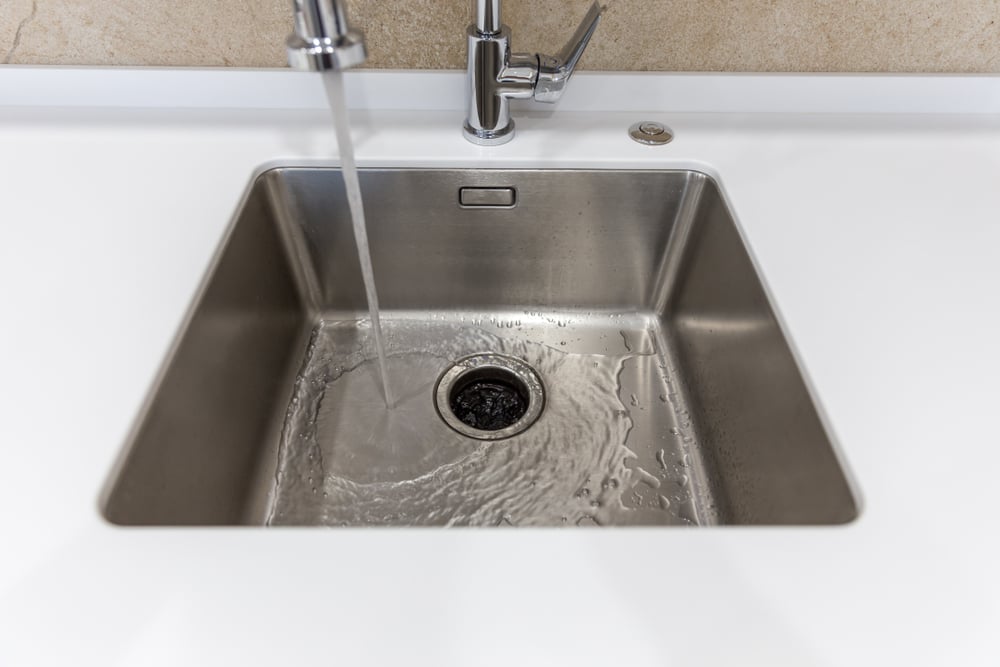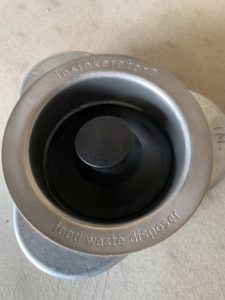They are making a few great pointers about Tips on Fixing a Leaking Garbage Disposal in general in this content directly below.

Waste disposal unit are essential cooking area devices that aid in taking care of food waste effectively. However, a dripping waste disposal unit can be an aggravating and messy trouble to take care of. Thankfully, several leaks can be dealt with quickly with a few basic steps. In this article, we will certainly talk about just how to repair a dripping garbage disposal effectively.
Intro
Waste disposal unit are installed under cooking area sinks and are designed to shred food waste into smaller sized items, allowing it to go through the pipes system quickly. While these gadgets are typically trusted, leakages can take place in time as a result of wear and tear, loosened connections, or damages to the unit.
Common Causes of Leakages in Rubbish Disposals
Worn Seals and Gaskets
Seals and gaskets play an essential role in stopping water from dripping out of the waste disposal unit. With time, these parts can wear away, bring about leakages around the disposal unit.
Loose Connections
The links between the waste disposal unit and the plumbing system can become loosened in time, causing water to leakage out during procedure.
Fractures or Holes in the Disposal System
Physical damages to the garbage disposal, such as splits or holes in the real estate, can also cause leaks.
Recognizing the Source of the Leak
Before trying to fix a dripping waste disposal unit, it is important to recognize the source of the leak. This can commonly be done with visual inspection or by carrying out simple tests.
Visual Assessment
Examine the garbage disposal device meticulously for any type of indications of water leak. Pay close attention to locations around seals, gaskets, and link factors.
Testing for Leaks
One means to test for leakages is by running water via the disposal device and looking for any visible signs of leak.
Tools and Products Needed for Dealing With a Leaking Waste Disposal Unit
Before beginning the repair work process, gather the essential tools and products, consisting of a screwdriver, adjustable wrench, plumber's putty, substitute seals or gaskets, and epoxy or patching product for repairing splits or openings.
Step-by-Step Guide to Dealing With a Leaking Garbage Disposal
Switch off the Power
Before attempting any type of repair work, make certain that the power to the garbage disposal device is shut off to stop the danger of electric shock.
Situate the Leak
Determine the exact area of the leak and identify the reason.
Tighten Connections
Make use of a wrench to tighten up any loose connections in between the disposal unit and the pipes system.
Change Seals or Gaskets
If the leakage results from used seals or gaskets, remove the old components and replace them with brand-new ones.
Patching Splits or Openings
For fractures or holes in the disposal system, usage epoxy or an ideal patching product to secure the broken location.
Examining the Waste Disposal Unit After Fixing
As soon as the repair service is total, check the garbage disposal by running water through it to guarantee that the leak has been dealt with.
Preventive Maintenance Tips to Stay Clear Of Future Leaks
To stop future leakages, it is essential to carry out regular upkeep on your waste disposal unit. This includes maintaining it clean, staying clear of placing non-food items or tough things down the disposal, and occasionally checking for leaks or various other concerns.
Final thought
In conclusion, taking care of a leaking garbage disposal is a fairly straightforward procedure that can be finished with basic tools and products. By complying with the actions described in this post and exercising preventative upkeep, you can keep your waste disposal unit in good working condition and prevent pricey repair services in the future.
What to Do About a Leaking Garbage Disposal
A leaking garbage disposal often goes unnoticed until you confront a sopping cabinet, a foul-smelling puddle, or an audible drip-drip-drip from the unit. The fix can be frustrating, too, because the leak can stem from a number of components in the system. Fortunately, with a little sleuthing, you can zero in on the leak and—depending on the exact location—stop the icky oozing and repair the component that caused it. Worst case scenario, if it turns out that the garbage disposal must be replaced, installing a new one is a reasonable do-it-yourself task for those with basic plumbing skills. Read on to keep the cash you’d otherwise hand over to a pro.
Prepare to find the leak
Prior to testing the garbage disposal for leaks, unplug it at the wall outlet and turn off the power from the breaker box to prevent electrical shock. Then insert a watertight sink stopper into your sink drain and wipe the unit dry with a clean cloth. In any handy container, mix a few drops of food coloring into a few cups of water, and pour the dyed water onto the sink stopper to help you locate the leak.
Investigate the source
the top, where the disposal meets the sink drain the side, where the dishwasher hose or main drain pipe connects to the disposal or the bottom of the unit Inspect each of these locations while gliding a light-colored rag over the unit; the dyed water will readily show on the rag and reveal the location of the leak. If a leak isn’t immediately apparent, remove the sink stopper and pour a few more cups of dyed water down the sink drain, then check for leaks again. Leaks near the top of the unit are more likely to show themselves while the sink is plugged, while side and bottom leaks are more noticeable while the sink is unplugged.
The metal sink flange that sits directly inside the sink drain is typically sealed around the top with plumber’s putty (a clay-like sealant) and then secured from under the sink with bolts. If the plumber’s putty deteriorates, or the bolts loosen, the flange can no longer form a watertight seal between the sink drain and the disposal—which could cause a leak at the top of the unit.
To reseal the leaky flange, you must first detach the garbage disposal. Start by loosening the screws securing the main drain pipe to the disposal, then loosen the screws in the metal clamp securing the dishwasher hose to the disposal and detach the drain pipe and dishwasher hose from the disposal. Loosen the screws in the mounting ring that connects the disposal to the metal mounting assembly beneath the sink, then pull down the disposal and carefully set it on a clean, dry surface. Loosen the bolts in the mounting assembly with a wrench, then pull down the mounting assembly and set it near the disposal.

We had been shown that report on How to fix a pretty consistent leak from my garbage disposal from a friend on our other web property. I beg you take the time to share this page if you liked it. I truly appreciate reading our article about Garbage Disposal Leaking From Bottom.
Click Here To Read More